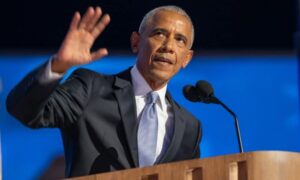Pope Francis suffers prolonged asthma crisis, receives transfusion, and remains in critical condition, says Vatican
Pope Francis, 88, remains in critical condition after experiencing a prolonged asthma crisis, the Vatican announced this Saturday (22). The pontiff had to undergo high-flow oxygen therapy and received a blood transfusion due to respiratory and hematological complications. Doctors monitoring his health condition indicate that his situation is highly concerning, mainly due to his advanced age and pre-existing medical conditions.
Hospitalized since February 14 at the Gemelli Hospital in Rome, Francis initially showed respiratory difficulties attributed to bronchitis. However, subsequent examinations revealed bilateral pneumonia and a polymicrobial infection, increasing the risks of further complications. The pontiff has been receiving intensive treatment and, so far, is responding to medications, though his condition remains unstable.
The Holy See has announced the cancellation of all the Pope’s public engagements, including the traditional Angelus prayer scheduled for Sunday (23) in St. Peter’s Square. Authorities and faithful around the world are closely following updates on his health condition.
Pope Francis’ health history and risk factors
Francis has a history of respiratory complications that worsen his current condition. In his youth, he had part of a lung removed due to a severe infection. This condition, combined with his advanced age, makes any respiratory issue potentially dangerous.
The pontiff also suffers from other medical conditions that contribute to his frailty. He has mobility issues due to a knee problem and has been hospitalized several times in recent years for respiratory infections and intestinal issues. In 2021, he underwent intestinal surgery to remove part of his colon, requiring an extended recovery period.
Novo comunicado do Vaticano, divulgado neste sábado (22), afirma que o Papa Francisco está em condição crítica após sofrer uma crise de asma prolongada. Exames de sangue realizados mostraram plaquetopenia associada a anemia, o que exigiu transfusões de sangue. De acordo com o… pic.twitter.com/lfx1bwoRMY
— GloboNews (@GloboNews) February 22, 2025
Experts warn that elderly patients with a delicate pulmonary history can quickly develop severe complications. The bilateral pneumonia diagnosed in Francis is an inflammatory condition affecting both lungs, which can impair respiratory capacity and lead to organ failure if not controlled in time.
High-flow oxygen therapy and blood transfusion: emergency measures
Given the worsening of the Pope’s condition, the medical team decided to administer high-flow oxygen therapy, a procedure used to increase oxygen supply to the lungs without requiring mechanical ventilation. This method is often used in patients with severe respiratory insufficiency to prevent complications associated with invasive ventilation.
Additionally, laboratory tests indicated that Francis developed thrombocytopenia, also known as low platelet count. This condition can result from various causes, including infections, immune disorders, or medication side effects. A blood transfusion was performed to stabilize hemoglobin levels and reduce the risk of bleeding.
Risk of sepsis and additional concerns
The primary concern among doctors at this time is the possible development of sepsis, a systemic infection that can arise as a complication of pneumonia. While recent tests have not indicated sepsis, experts stress that immunocompromised and elderly patients are more vulnerable to this type of complication.
Warning signs of sepsis include persistent fever, low blood pressure, and changes in blood test results. The Pope is being closely monitored to detect any signs of systemic infection and receive immediate treatment if necessary.
Francis’ routine in the hospital and his response to treatment
Despite the severity of his condition, the Vatican has reported that Francis continues to follow news and carry out some administrative tasks. He receives daily newspapers, takes phone calls, and maintains contact with his close team.
Although experiencing respiratory difficulties and needing to limit his movements, the Pope has been able to walk short distances within his hospital room, a positive factor in preventing complications such as thrombosis and muscle atrophy. He has also maintained a regular diet and has shown a good appetite in recent days, according to the Holy See.
However, doctors emphasize that his condition can change at any time. The fact that he is not on mechanical ventilation is a favorable sign, but the need for transfusions and oxygen therapy indicates that his body is still struggling to maintain adequate oxygen and hemoglobin levels.
Canceled engagements and impact on the Vatican
The Pope’s absence from official events has significantly impacted the Vatican. In addition to the Angelus prayer, which traditionally attracts thousands of faithful to St. Peter’s Square, various audiences and pastoral commitments have been suspended until a significant improvement in his health is observed.
Internally, the Holy See’s team is working to ensure the administration of the Church continues smoothly, while religious leaders worldwide send messages of solidarity and prayers for the pontiff.
Global attention and messages of support
The Pope’s health status has mobilized faithful and religious leaders worldwide. Since the announcement of his hospitalization, churches across the globe have held Masses and prayer sessions dedicated to his recovery. Political leaders and authorities have also expressed their support, highlighting his significance to the Catholic Church and the global geopolitical landscape.
On social media, thousands of faithful share messages of encouragement and calls for intercession for the Pope’s health. The Vatican has received a large volume of correspondence and expressions of support from various countries.
Francis’ influence and legacy in the Catholic Church
Since his election in 2013, Francis has been one of the most influential popes in modern history. With a stance focused on inclusion, social justice, and modernization of the Church, he has been a charismatic and popular leader among Catholics and non-Catholics alike.
Some of his key initiatives include:
- Advocacy for the rights of migrants and refugees
- Climate change awareness and sustainability promotion
- Internal Vatican reforms and anti-corruption efforts
- Interfaith dialogue and global peace initiatives
- Support for marginalized communities and vulnerable populations
His critical health condition raises concerns about the continuity of his pontificate and the future leadership of the Catholic Church.
Timeline of Pope Francis’ hospitalization
- February 14: Pope Francis is admitted to the Gemelli Hospital in Rome after experiencing respiratory difficulties.
- February 15-19: Initial diagnosis of bronchitis evolves into bilateral pneumonia with a polymicrobial infection.
- February 20: The Vatican reports that Francis is responding to treatment, though his condition remains unstable.
- February 21: The medical team warns that he is not out of danger. The need for high-flow oxygen therapy is confirmed.
- February 22: A new statement reports a prolonged asthma crisis and blood transfusion. His condition remains critical.
- February 23: The Pope cancels the Angelus prayer and continues under intensive observation.
The pontiff’s condition continues to be closely monitored, and further updates are expected in the coming days.

Pope Francis, 88, remains in critical condition after experiencing a prolonged asthma crisis, the Vatican announced this Saturday (22). The pontiff had to undergo high-flow oxygen therapy and received a blood transfusion due to respiratory and hematological complications. Doctors monitoring his health condition indicate that his situation is highly concerning, mainly due to his advanced age and pre-existing medical conditions.
Hospitalized since February 14 at the Gemelli Hospital in Rome, Francis initially showed respiratory difficulties attributed to bronchitis. However, subsequent examinations revealed bilateral pneumonia and a polymicrobial infection, increasing the risks of further complications. The pontiff has been receiving intensive treatment and, so far, is responding to medications, though his condition remains unstable.
The Holy See has announced the cancellation of all the Pope’s public engagements, including the traditional Angelus prayer scheduled for Sunday (23) in St. Peter’s Square. Authorities and faithful around the world are closely following updates on his health condition.
Pope Francis’ health history and risk factors
Francis has a history of respiratory complications that worsen his current condition. In his youth, he had part of a lung removed due to a severe infection. This condition, combined with his advanced age, makes any respiratory issue potentially dangerous.
The pontiff also suffers from other medical conditions that contribute to his frailty. He has mobility issues due to a knee problem and has been hospitalized several times in recent years for respiratory infections and intestinal issues. In 2021, he underwent intestinal surgery to remove part of his colon, requiring an extended recovery period.
Novo comunicado do Vaticano, divulgado neste sábado (22), afirma que o Papa Francisco está em condição crítica após sofrer uma crise de asma prolongada. Exames de sangue realizados mostraram plaquetopenia associada a anemia, o que exigiu transfusões de sangue. De acordo com o… pic.twitter.com/lfx1bwoRMY
— GloboNews (@GloboNews) February 22, 2025
Experts warn that elderly patients with a delicate pulmonary history can quickly develop severe complications. The bilateral pneumonia diagnosed in Francis is an inflammatory condition affecting both lungs, which can impair respiratory capacity and lead to organ failure if not controlled in time.
High-flow oxygen therapy and blood transfusion: emergency measures
Given the worsening of the Pope’s condition, the medical team decided to administer high-flow oxygen therapy, a procedure used to increase oxygen supply to the lungs without requiring mechanical ventilation. This method is often used in patients with severe respiratory insufficiency to prevent complications associated with invasive ventilation.
Additionally, laboratory tests indicated that Francis developed thrombocytopenia, also known as low platelet count. This condition can result from various causes, including infections, immune disorders, or medication side effects. A blood transfusion was performed to stabilize hemoglobin levels and reduce the risk of bleeding.
Risk of sepsis and additional concerns
The primary concern among doctors at this time is the possible development of sepsis, a systemic infection that can arise as a complication of pneumonia. While recent tests have not indicated sepsis, experts stress that immunocompromised and elderly patients are more vulnerable to this type of complication.
Warning signs of sepsis include persistent fever, low blood pressure, and changes in blood test results. The Pope is being closely monitored to detect any signs of systemic infection and receive immediate treatment if necessary.
Francis’ routine in the hospital and his response to treatment
Despite the severity of his condition, the Vatican has reported that Francis continues to follow news and carry out some administrative tasks. He receives daily newspapers, takes phone calls, and maintains contact with his close team.
Although experiencing respiratory difficulties and needing to limit his movements, the Pope has been able to walk short distances within his hospital room, a positive factor in preventing complications such as thrombosis and muscle atrophy. He has also maintained a regular diet and has shown a good appetite in recent days, according to the Holy See.
However, doctors emphasize that his condition can change at any time. The fact that he is not on mechanical ventilation is a favorable sign, but the need for transfusions and oxygen therapy indicates that his body is still struggling to maintain adequate oxygen and hemoglobin levels.
Canceled engagements and impact on the Vatican
The Pope’s absence from official events has significantly impacted the Vatican. In addition to the Angelus prayer, which traditionally attracts thousands of faithful to St. Peter’s Square, various audiences and pastoral commitments have been suspended until a significant improvement in his health is observed.
Internally, the Holy See’s team is working to ensure the administration of the Church continues smoothly, while religious leaders worldwide send messages of solidarity and prayers for the pontiff.
Global attention and messages of support
The Pope’s health status has mobilized faithful and religious leaders worldwide. Since the announcement of his hospitalization, churches across the globe have held Masses and prayer sessions dedicated to his recovery. Political leaders and authorities have also expressed their support, highlighting his significance to the Catholic Church and the global geopolitical landscape.
On social media, thousands of faithful share messages of encouragement and calls for intercession for the Pope’s health. The Vatican has received a large volume of correspondence and expressions of support from various countries.
Francis’ influence and legacy in the Catholic Church
Since his election in 2013, Francis has been one of the most influential popes in modern history. With a stance focused on inclusion, social justice, and modernization of the Church, he has been a charismatic and popular leader among Catholics and non-Catholics alike.
Some of his key initiatives include:
- Advocacy for the rights of migrants and refugees
- Climate change awareness and sustainability promotion
- Internal Vatican reforms and anti-corruption efforts
- Interfaith dialogue and global peace initiatives
- Support for marginalized communities and vulnerable populations
His critical health condition raises concerns about the continuity of his pontificate and the future leadership of the Catholic Church.
Timeline of Pope Francis’ hospitalization
- February 14: Pope Francis is admitted to the Gemelli Hospital in Rome after experiencing respiratory difficulties.
- February 15-19: Initial diagnosis of bronchitis evolves into bilateral pneumonia with a polymicrobial infection.
- February 20: The Vatican reports that Francis is responding to treatment, though his condition remains unstable.
- February 21: The medical team warns that he is not out of danger. The need for high-flow oxygen therapy is confirmed.
- February 22: A new statement reports a prolonged asthma crisis and blood transfusion. His condition remains critical.
- February 23: The Pope cancels the Angelus prayer and continues under intensive observation.
The pontiff’s condition continues to be closely monitored, and further updates are expected in the coming days.











Post Comment